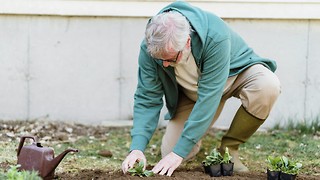“Well it’s all art isn’t it?” Or is it?
Olivia Murphy considers Grayson Perry’s Reith lectures and how, if at all, we can judge art

"What makes good art?"
It sounds like a daunting Cambridge essay question, or worse, small talk at an unappealing dinner party. But this is the question that Grayson Perry attempts to answer in the latest series of the Reith lectures on BBC Radio 4. Perry treads the tight rope between academic flippant rather well. So what do you need to know about Perry? He is an artist, potter, Turner Prize winner, transvestite and, importantly, he is very entertaining.
An interesting question that Perry raises is how we tell if art is good, and how good it is. Perhaps we should consult empirical measurements such as how many people visit an exhibition that the artwork is in? This might seem sensible except this analysis probably puts a Mickey Mouse statue in Disneyland Paris as one of the best pieces of artwork that currently exists.
Another plausible measurement could be how large the artwork is. Most of the time larger paintings are pricier than smaller ones. Maybe bigger really is better? If this is true then at the age of six I produced a valuable piece of artwork by ripping wallpaper off my bedroom wall and colouring the exposed plaster green. Alas my talent was unrecognised, unappreciated and a great piece of art has been lost to the art world.
So where else can we turn for answers? Why not the past? Perry suggests that we ought to look to the Greeks and their concept of the Golden Ratio. Again, this seems sensible, and who are we to say that great minds like Pythagoras and Euclid were frankly a bit potty? Especially as it is argued that this calculation lay behind works like the Parthenon. Nevertheless, Pythagoras and Euclid were probably the ancient equivalent of some bonkers professors today: locked in their studies, unlikely to see anything beautiful for days, obsessed with numbers and probably lacking in vitamin D. Are we really to believe that art is reducible to a formula? Maybe I am prejudiced as an arts student with a phobia of algebra, quadratic equations and, most of all, fractions but a numerical approach seems rather cold.
Perhaps we must seek the opinion of 'experts' in order to find out what constitutes good art. In this part of his lecture Perry attempts to dissect who tells us 'what's what' in the art circles. He suggests that a tight-knit group of curators, artists, dealers and bigwigs decide what's in vogue, sometimes literally, through a code of winks and nods. At first this 'art conspiracy' seems ridiculous but look closer and frighteningly some of its aspects ring true. Let's take, for example, Damien Hirst. Hirst has some interesting, if controversial, ideas and maybe he would have been noticed by the art circles regardless but it's hard to see how a little help from Charles Saatchi was damaging. In 1991 Saatchi offered to fund Hirst's work and the outcome was exhibited in the Saatchi Gallery. As a result Hirst was nominated for the Turner Prize and his first major international presentation followed shortly after in 1993.
I hear the more cynical among you cry 'well isn't it all about money?' Yes there is a view that if your art doesn't fit inside a Chelsea apartment then you are never going to make it. Perry wittily portrays this idea of art as an asset through the acronym 'SWAG': silver, wine, art and gold, four key areas that banks invest in. Although this poses an interesting question: if art is defined by the framework that it is seen through, then is art as an asset still art? I would argue it is if individual pieces are still emotive and enchanting on a personal level. But the concept of art as an asset devalues artwork as a whole.
Thus concludes our whistle stop tour of what may lie behind the art world. Overall it would seem that Perry's lectures and this discussion have generated more questions than answers. Measuring art empirically or by popularity has been ridiculed but then how do we measure it? Not an easy question to answer but I would suggest that we act on gut instinct. First impressions often stay with us despite how much rationalising we do later. So, go for it, like what you want, it isn't a crime. Unless you destroy other people's artwork...that probably is a crime.
 News / Uni Scout and Guide Club affirms trans inclusion 12 December 2025
News / Uni Scout and Guide Club affirms trans inclusion 12 December 2025 News / Pembroke to convert listed office building into accom9 December 2025
News / Pembroke to convert listed office building into accom9 December 2025 News / Cambridge Vet School gets lifeline year to stay accredited28 November 2025
News / Cambridge Vet School gets lifeline year to stay accredited28 November 2025 Features / Searching for community in queer Cambridge10 December 2025
Features / Searching for community in queer Cambridge10 December 2025 News / Uni redundancy consultation ‘falls short of legal duties’, unions say6 December 2025
News / Uni redundancy consultation ‘falls short of legal duties’, unions say6 December 2025








